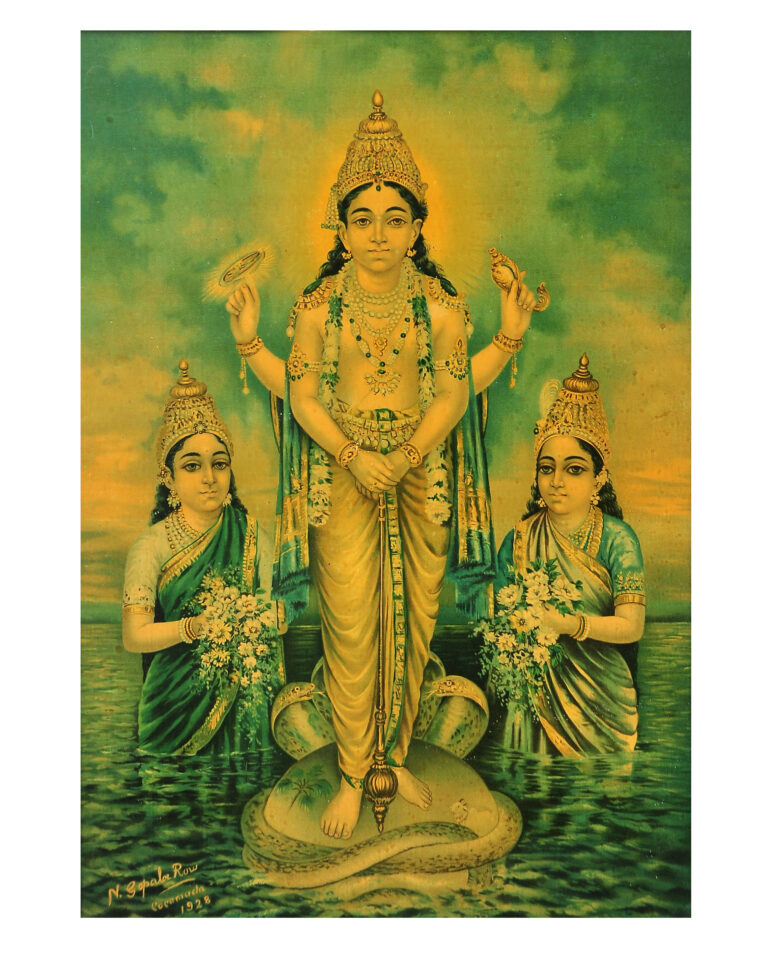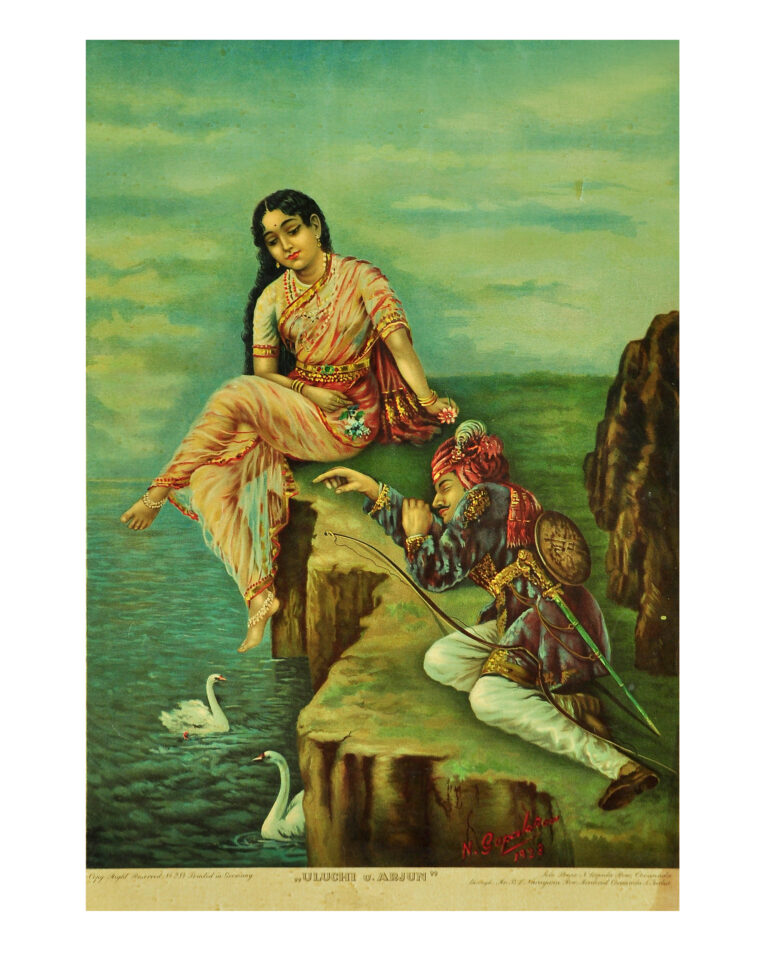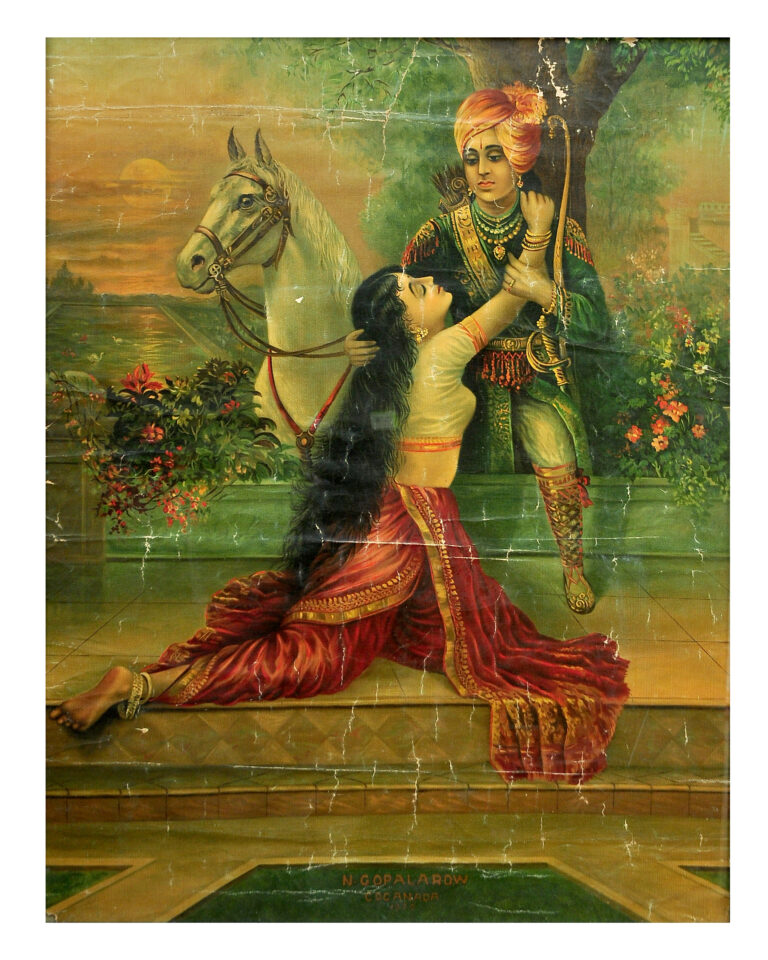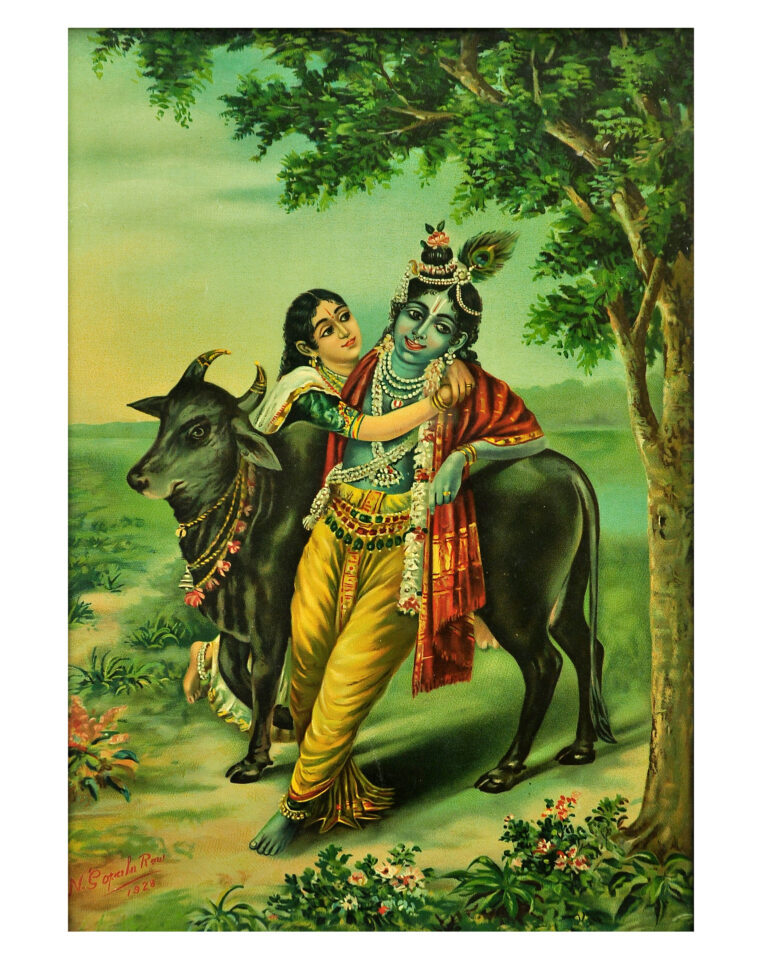






N. Gopala Row: A Self-Taught Master of Indian Art
N. Gopal Row, a renowned Indian artist of early 20th century known for his contributions to traditional Indian art forms, particularly in the depiction of mythological and religious themes. His style often blends traditional techniques with contemporary elements, making his works distinctive.
Technical Mastery
Refined Skills: N Gopala Row’s ability to manipulate color, light, and composition demonstrates a high level of technical proficiency. His paintings often exhibit a deep understanding of techniques that give his work a polished, sophisticated appearance.
Effortless Strokes
Fluidity in Style: N Gopala Row’s brushwork is characterized by fluid, effortless strokes that create a sense of movement and life in his paintings. This quality makes his art appear both spontaneous and meticulously crafted, captivating viewers.
Emotional Resonance
Delight for the Soul: N Gopala Row’s ability to evoke emotion through his art is a significant reason for his acclaim. His use of color and composition often conveys a sense of harmony and tranquility, resonating deeply with viewers and providing a soulful experience.
Cultural Reflection
Incorporation of Themes: N Gopala Row’s works often reflect Indian themes and mythology, bridging traditional and contemporary styles. This connection to cultural narratives adds depth and meaning to his art, making it significant in the context of Indian art history.
Innovation & Influence
Pioneering Oleographs: N Gopala Row was also innovative in his use of oleography, bringing high-quality prints to India. This not only showcased his artistic vision but also influenced the way art was disseminated and appreciated in the region.
Legacy & Recognition
Enduring Impact: N Gopala Row’s contributions have left a lasting impact on Indian art, inspiring future generations of artists. The recognition he has received, both during his lifetime and posthumously, underscores his significance in the art world.
N Gopal Row paintings as German Oleographs
German oleographs refer to a specific type of print produced using the oleographic printing technique, particularly in Germany. This method gained popularity in the 19th century and is characterized by its ability to replicate the look and feel of oil paintings.
German oleographs were created using a lithographic process, where images were printed from a flat surface. The use of oil-based inks allowed for vibrant colors and textures that mimicked traditional oil paintings.
Many German oleographs depicted scenes from history, mythology, landscapes, and portraits. They often featured detailed and ornate designs, catering to both artistic and commercial markets.
The oleographic process made art more accessible to the general public, as these prints were more affordable than original oil paintings. This contributed to the popularization of art in homes and public spaces.
German oleographs played a significant role in the dissemination of visual culture during the 19th century, influencing decorative arts, advertising, and illustration.
Today, original German oleographs are considered collectible items and are valued for their artistic quality and historical significance.
Overall, German oleographs are an important part of the history of printmaking and reflect the artistic trends of their time.
